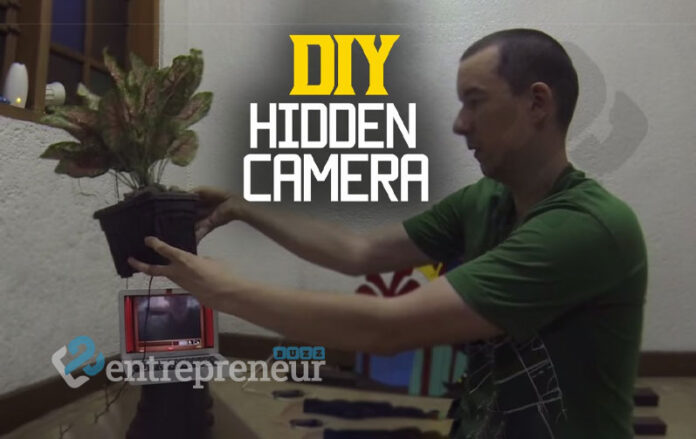An effective home safety plan must include security cameras. Installing security cameras haphazardly can leave you without protection if they result in dead zones or eroded video signals. The security camera placement guide below will ensure that your property and you are covered to the fullest extent possible.
Cameras can be wired or wireless
Choosing between wired or wireless security cameras is the first step in choosing a home security camera system. Almost all aspects of camera placement are affected by your choice.
Powered over Ethernet (PoE) or coaxial cables transmit the feed from a wired security camera to a central hub. Although the cables need to run through walls or in the ceiling, cameras can be placed anywhere the cables can reach.
A wireless security camera sends its feed to a hub using a wireless signal. The flexibility of wireless cameras is enhanced by the lack of transmission wires. In spite of this, they still require a power source such as a wall outlet or a battery.
Keep an eye on key areas
Any region of the house outside is a potential section point for gatecrashers. In any case, you’ll need to limit those passage focuses to the ones where gatecrashers are probably going to enter. As indicated by the home investigator exchange bunch NACHI, more than 34% of gatecrashers get through the front entryway. Thus, focus on your surveillance cameras to screen these regions, in a specific order of significance:
- Doorway
- Window on the first floor
- The door at the back
- Garage
- In the backyard
- Pavement
Perfectly position your cameras
Observed regions are not really similar spots to where the cameras are found.
Inside, it, as a rule, checks out to find the camera in a similar room. Corners will generally work best since they provide you with the largest perspective on the room.
For observing open-air areas, you might see that it’s ideal to put the camera inside. Watching out for your carport might mean finding the camera in a kitchen window. To have an expansive perspective on the lawn, setting the camera on a washroom window ledge could give the best point.
Be aware of your power source
Power is required for all security cameras. With wire-free cameras, you can place them almost anywhere since they run on batteries. As each wireless security camera requires its own power source, it needs to be within 6 feet of a power outlet.
PoE cables combine video, audio, and power functions into a single cable, which is typically used for wired security camera systems.
Analyze signal transmission
Coupled with the power source, conclude how the surveillance camera will send its criticism to the focal center point, whether the center point may be a computerized video recorder (DVR), organized video recorder (NVR), or Wi-Fi.
Remote surveillance cameras send back a reasonable, trustworthy sign through open regions or through slight, less thick walls or floors. In the event that the camera is expected to go a sign through brickwork walls, the sign may not effectively arrive at the center.
Wired surveillance cameras utilize actual PoE links or coaxial links to convey the message back to the center point. The sign ought to be great and clear. Yet, you should delineate a method for running the link through the walls, roof or under the floor.
Choosing the right height
High mounting positions work best since they keep the surveillance camera far away from interlopers, inquisitive kids or curious pets.
For outside establishments, mount the surveillance camera around 8 to 10 feet over the ground. Stay away from excessively high situations, for example, at the highest points of peaks, as the camera will be less ready to get fine subtleties. Furthermore, cameras that are put too high are harder to clean and keep up with.
Inside, mount the camera above the entryway or window level. Point the camera somewhat descending.
Correctly install the camera
Surveillance cameras introduce in various ways. Unsupported cameras lay on window ledges, on the highest points of kitchen wall cupboards or on coolers. While these are not difficult to introduce, they are similarly simple for intruders to disrupt.
The most strong surveillance camera mount utilizes a few screws to connect the camera base straightforwardly into a stud, outside siding or into drywall with secures.
Install hidden security cameras
With home surveillance cameras being so common today, could an interloper be aware to search for cameras and to impair them? Perhaps. That is the reason numerous property holders go to the subsequent stage and introduce stowed away surveillance cameras.
A portion of these secret cameras — call them spy cameras — are no bigger than an ice block and send video and sound feeds to your cell phone. While not quite as vigorous as undeniable surveillance camera frameworks, they truly do win out by being little to the point that they are challenging to distinguish. On the online market, there are different types of hidden spy cameras for homes available. For better security, you can install this.
A few mortgage holders go even above and beyond and introduce a bigger phony distraction camera in a similar room as the secret camera. Assuming the gatecrasher impairs the phony camera, the genuine camera continues to film.
Observe windows carefully
One drawback of pointing a surveillance camera outside (while remaining inside) is that the infrared light innovation cleans out the image when pointed through the glass.
Try different things with various points. Take a stab at switching off the IR or night vision include. Or on the other hand, wrap the camera with a little towel to obstruct room light from considering the glass.

